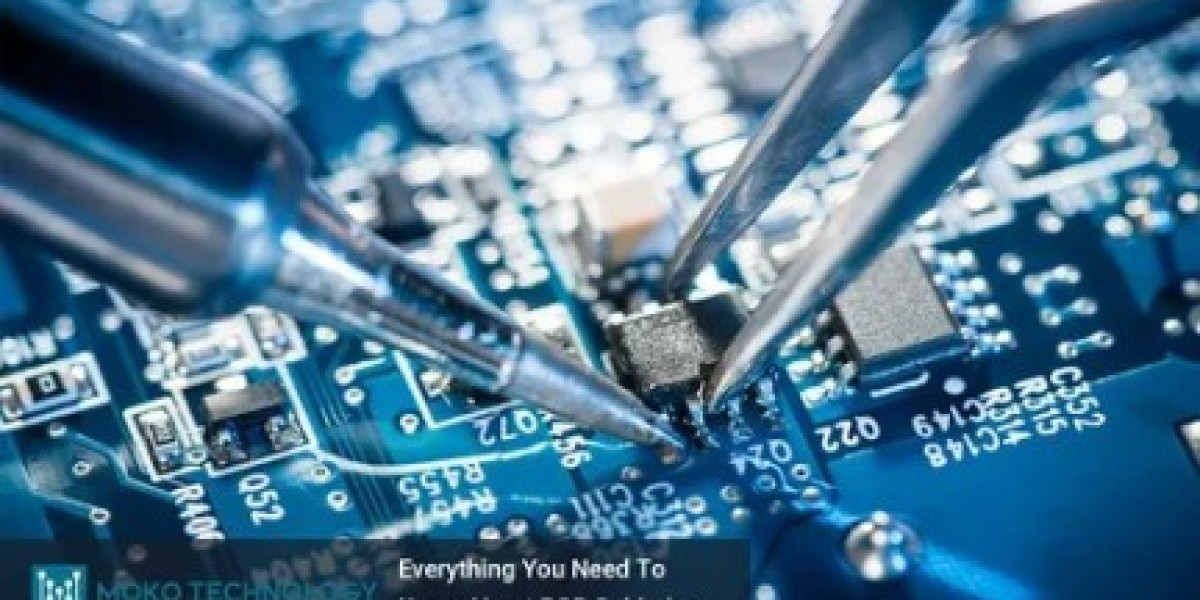Printing Circuits and Components
One of the most significant developments in printed electronics has been the ability to print actual electrical circuits and components directly onto various substrates using printing technologies. Conductive inks made of metals such as silver, copper or carbon are printed onto surfaces using screen, gravure, inkjet or other printers to form the necessary patterns. This allows entire printed circuit boards or conductive traces to be produced through printing rather than traditional lithography or etching techniques. Components such as resistors, capacitors and even integrated circuits have also been printed directly using functional inks. For example, resistor ink formulations containcarbon or other compounds to enable varying levels of resistance when printed as thin films. Similarly, capacitor inks utilize dielectric and conductive layers to enable energy storage.
A major advantage of Printed Electronics is the ability to produce circuits and components using an additive process on roll-to-roll equipment. This not only minimizes raw material usage through precise deposition but also enables flexible form factors to be manufactured. Entire circuits can be printed on plastic, paper or textile substrates that are bendable, lightweight and low-cost. Complex multilayer designs are possible using sequential printing and curing steps.
New Forms of Display Technology
While organic light emitting diode or OLED displays were an early commercial application of printed electronics, new types of displays are now emerging. For example, electrophoretic e-paper displays that mimic the appearance of regular ink on paper are now possible through printing. These reflect ambient light like paper but can also change displayed content electronically, consuming very little power. Other printable display technologies enable new form factors like foldable or conformal screens. Quantum dot inks allow bright, efficient color screens to be produced over large areas using techniques compatible with printed circuits. Combined with touch and sensor technologies, thesenext-generation printable displays open up opportunities in signage, wearables, IoTdevices and beyond.
Printing Sensors and Wearable Electronics
Sensors and components for wearable devices represent another major opportunity for printed electronics. Strain, temperature, humidity and other environmental sensors have been printed that can detect and respond to changes. Combining these with simple electronic components enables "smart labels", interactive product packaging and wearable interfaces. For example, heart rate and hydration level sensors printed directly onto fabrics allow developing health and fitness wearables. Interactive printed displays, haptics and even energy storage inks enable more sophisticated self-powered devices to be manufactured using printing approaches. The ability to deposit electronics conformably onto various textile or three-dimensional surfaces overcomes limitations of rigid device structures and paves the way for seamlessly integrating technology into our lives.
Internet of Printed Things
The convergence of printed electronics, materials, processing and interconnection techniques has made it possible to envision entire systems being printed. For example, RFID tags, sensors, displays, batteries and simple processors could be additively fabricated and linked in a flexible format to enable the "Internet of Printed Things." Low-cost wireless modules, flexible antennas and energy solutions have expanded the scope for such applications. Entire smart packages, interactive product labels, environmental sensors and otherIoTnodes could be produced through printing alone, reducing costs while enabling innovative form factors. When integrated with cloud services,big data analytics and artificial intelligence, printed systems promise totransform manufacturing, logistics, healthcare and beyond by embedding intelligence everywhere.
Key Challenges and the Road Ahead
While printed electronics have made tremendous progress, challenges still remain when it comes to performance, lifetime reliability and manufacturing limitations compared to traditional silicon approaches. Functional inks require ongoing refinement to match the specifications required for advanced applications. Printing high-resolution circuits and components with interconnect densities rivaling silicon chips will require innovations in materials as well as process control. Lifetime stability of printed features under environmental stresses needs to be improved through engineering inks and substrates. Developing true printed transistors with performance suitable for applications beyond displays will unlock the full potential. Investment in R&D, production scale-up, standards and certification will also be crucial to drive the industry forward toward widespread commercialization and deployment of fully printed systems and products. But as the technology crosses key milestones, printed electronics is poised to revolutionize manufacturing and enable a new generation of applications not possible before.
Get more insights on Printed Electronics
About Author:
Ravina Pandya, Content Writer, has a strong foothold in the market research industry. She specializes in writing well-researched articles from different industries, including food and beverages, information and technology, healthcare, chemical and materials, etc. (https://www.linkedin.com/in/ravina-pandya-1a3984191)


